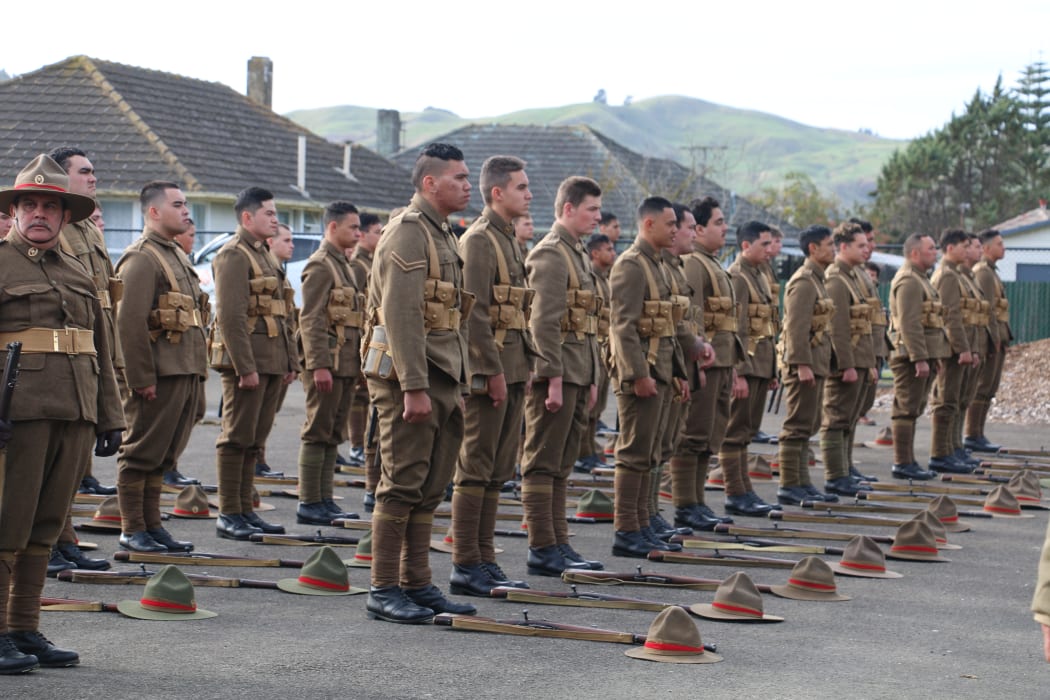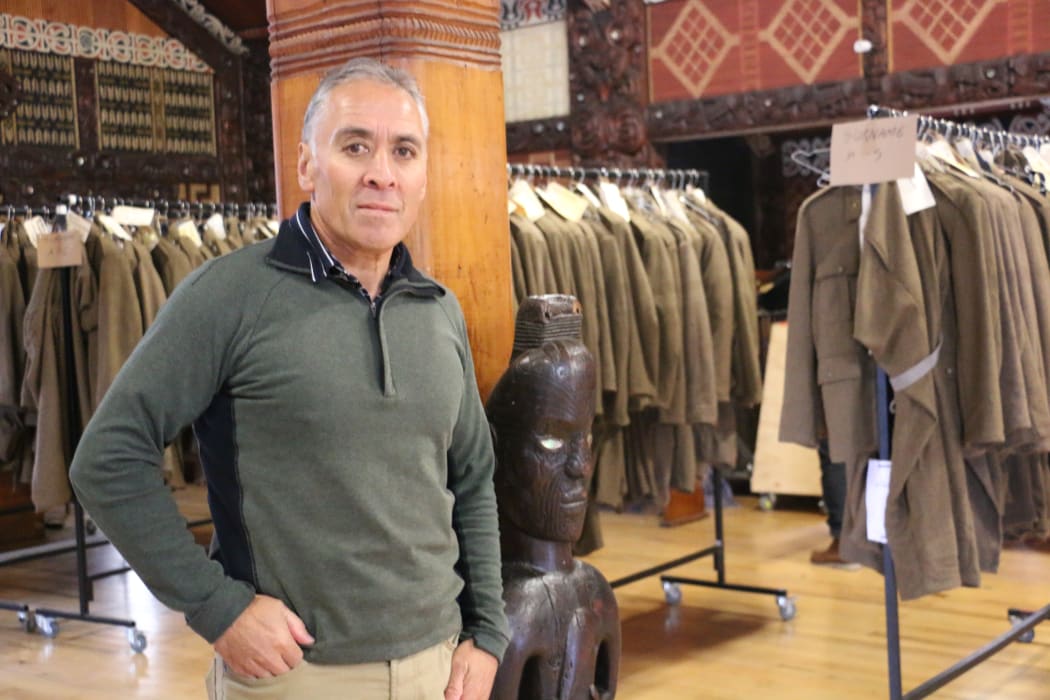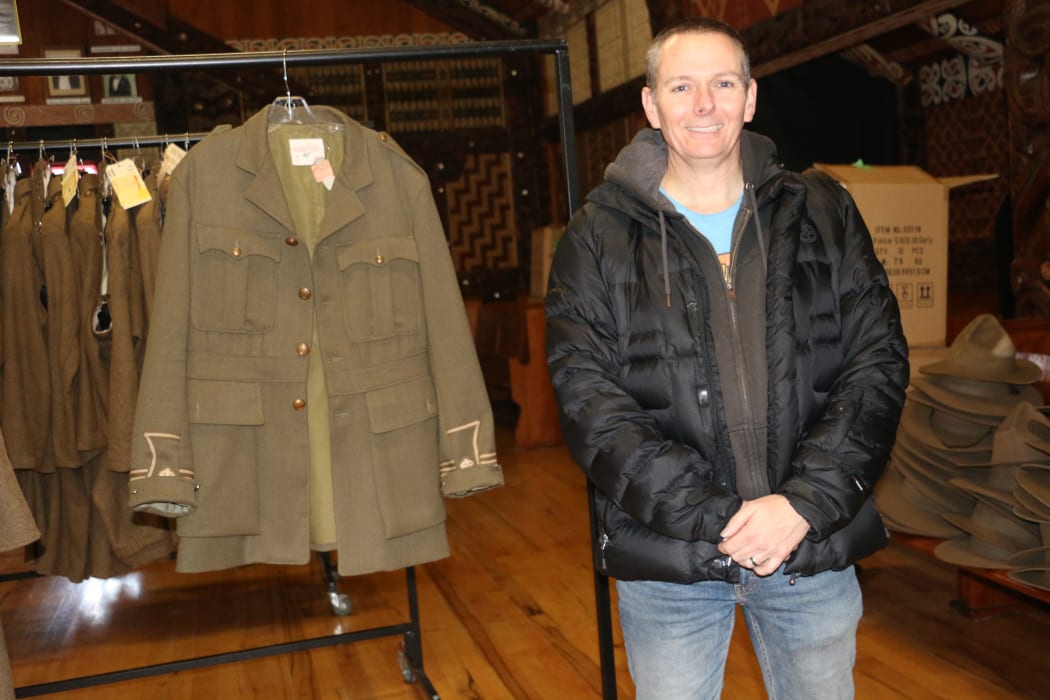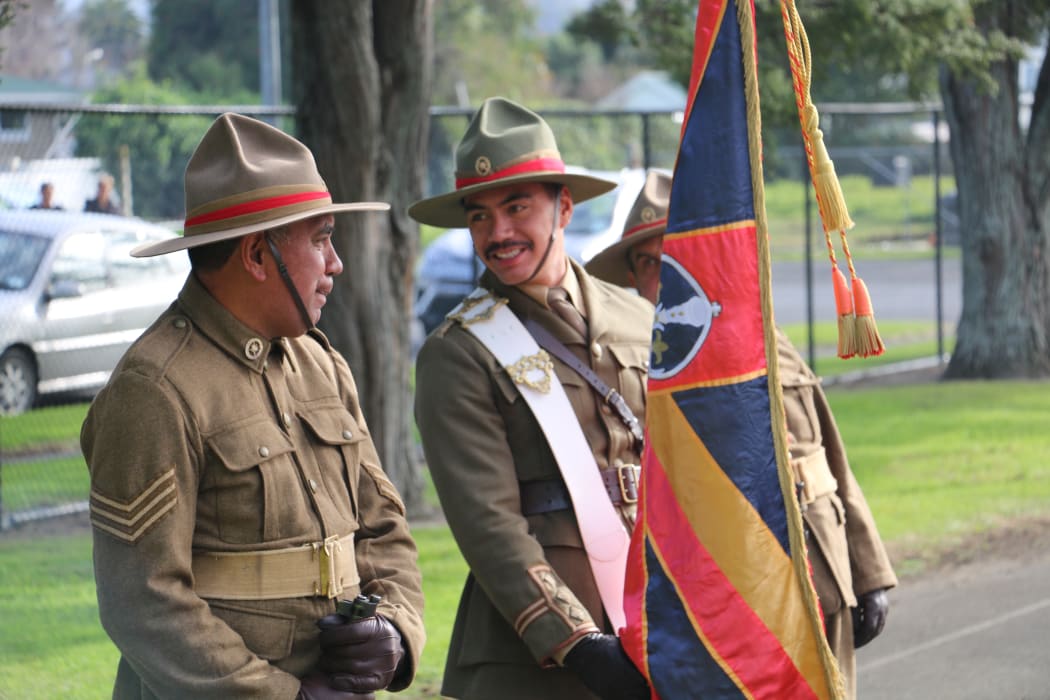
The 100 man honour guard represented the 100 years since the return of the Pioneer Battalion to Te Tairawhiti Photo: RNZ/Justine Murray
Tātou tātou i roto i nga ra o te mamae, tatou tatou i roto i nga ra o te rangimarie, o te maungrongo. In war we were together, In peace let us be together again.
These words featured in the Gisborne Times as a call to action to gather en masse to welcome back the soldiers of the Pioneer Battalion.
In 1918 local iwi of Te Tairawhiti set about organising an event to raise money for the returned soldiers, but midway through planning the war ended. The fundraiser then become a large scale week-long event to celebrate their return. The ship bound for Gisborne decided to disembark at Auckland instead, so the soldiers from Te Tai Rawhiti took the train from Rotorua back home many of whom were from Tuwharetoa, Wairarapa, Ngai Tuhoe and Iwi of within wider East Coast region.
Hui Aroha was held at the Gisborne racecourse, ablution areas had to be constructed, food was donated by nearby farmers. The event raised around twenty five thousand dollars, the equivalent of three million dollars today.
The book Whitiki Whiti Whiti E! Written by Dr Monty Soutar details the New Zealand response to the First World War with a focus on Māori conscription to the Pioneer Battalion. The books Gisborne launch on the 8th of June coincided with the re-enactment of Hui Aroha where one hundred men, many of whom descend from soldiers of the Pioneer Battalion wore replica battalion uniforms and marched from Te Poho o Rawiri Marae to the Gisborne town ship and ended with a mass haka.

Dr Monty Soutar, author of Whitiki Whiti Whiti E! Māori In The First World War Photo: RNZ/Justine Murray
The uniforms were provided by Sir Peter Jackson’s company Wingnut Film Productions from the heavy woollen jackets to the specially made 100 Māori battalion badges. A similar re-enactment had been carried out with a sixty man honour guard when the C Company Museum opened at Tairawhiti Museum.

Military Historian Peter Connor of Wingnut Film Productions Photo: RNZ/Justine Murray
Military Advisor Rayner Jahnke had suggested the one hundred man honour guard and was tasked with training the young men, many of whom attend schools, colleges and training academies, he was also responsible for the guns carried by the honour guard.

The 100 man honour guard represented the 100 years since the return of the Pioneer Battalion to Te Tairawhiti Photo: RNZ/Justine Murray
Whitiki Whiti Whiti E! Is the recruitment phrase used in 1914 to encourage men to volunteer for Te Hokowhitu a TU, this was a phrase calling for the people to put on your war belt, rise up, rise up Māori people,” Dr Soutar says.

